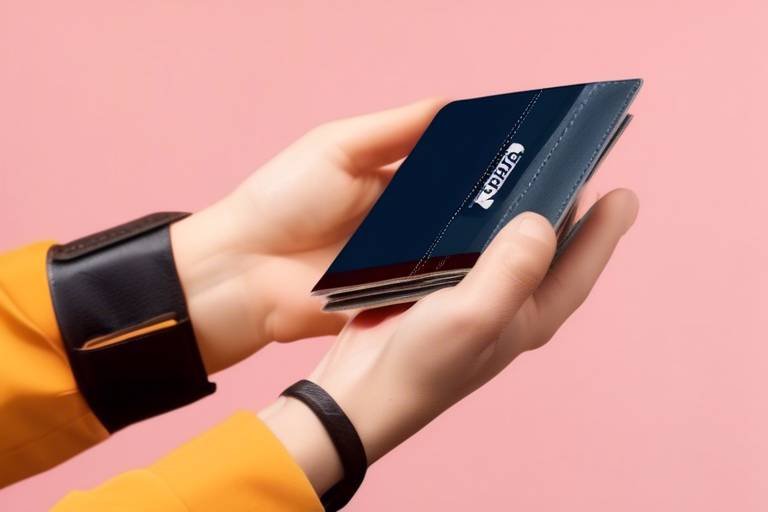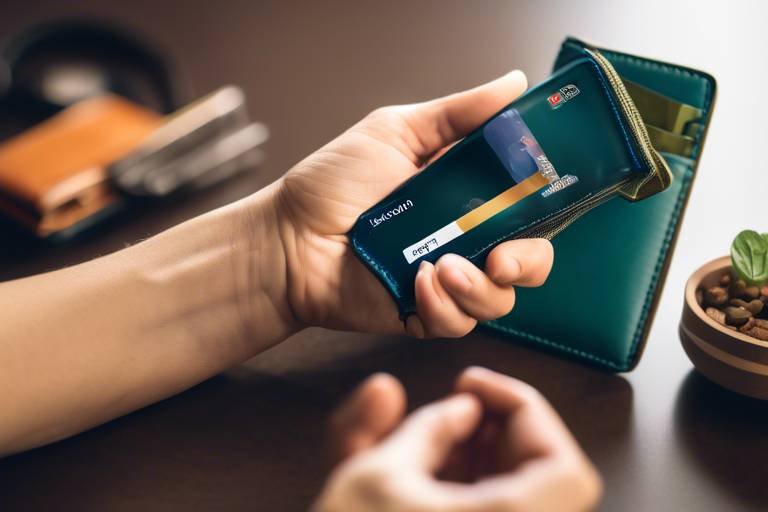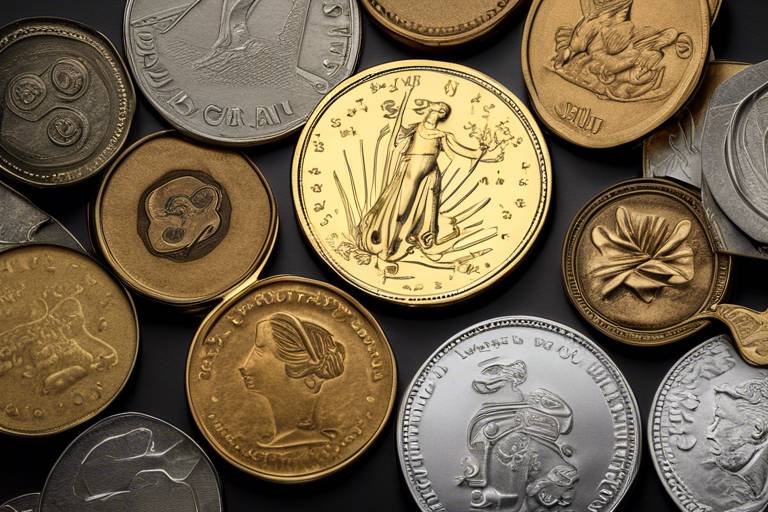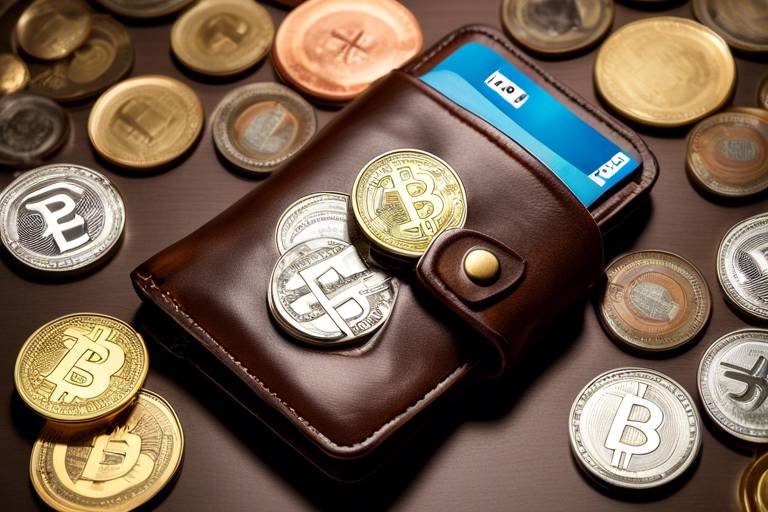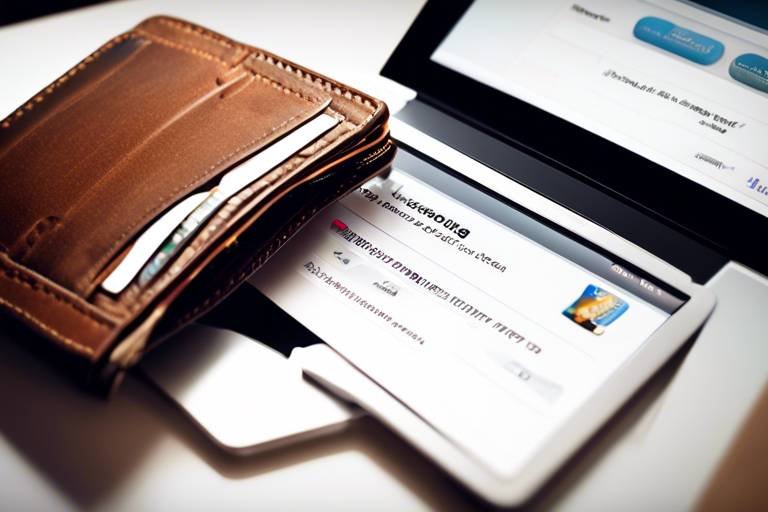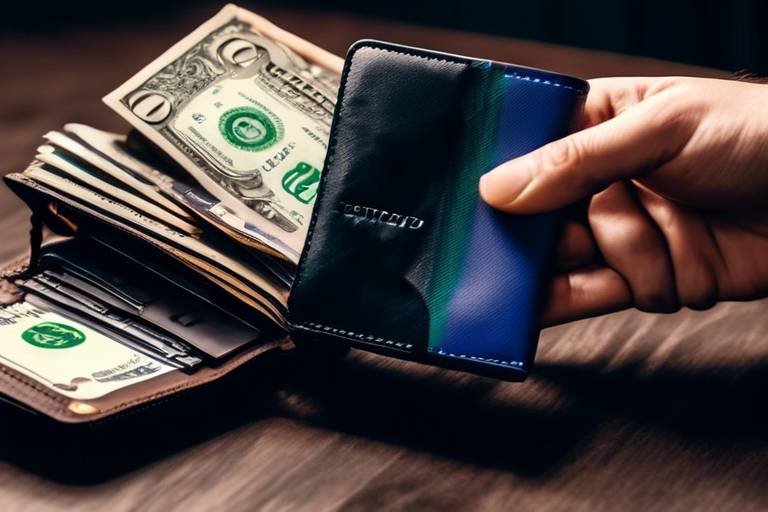How to Set Up Two-Factor Authentication on Exchanges
In today's digital age, securing your online accounts has never been more critical, especially when it comes to cryptocurrency exchanges. With the rise of cyber threats, simply having a strong password is no longer enough. This is where Two-Factor Authentication (2FA) comes into play. Think of 2FA as a robust security gate that requires not just a key (your password) but also a second form of identification to unlock it. By setting up 2FA on your exchange accounts, you significantly reduce the risk of unauthorized access and protect your hard-earned assets.
So, how does one go about setting up 2FA? The process may seem daunting at first, but trust me, it’s simpler than you might think. In this guide, we’ll walk you through the ins and outs of 2FA, the various methods available, and how to implement it on popular exchanges like Coinbase, Binance, and Kraken. By the end of this article, you’ll not only understand the importance of 2FA but also feel empowered to take control of your online security.
Imagine your cryptocurrency account as a treasure chest. You wouldn’t just rely on a flimsy lock to keep it safe, right? You’d want a heavy-duty lock and perhaps even a guard dog! That’s exactly what 2FA provides—an additional layer of security that makes it much harder for hackers to gain access. Now, let’s dive deeper into what 2FA is and why it’s essential for anyone dealing with digital currencies.

Understanding Two-Factor Authentication
This article provides a comprehensive guide on setting up two-factor authentication (2FA) on cryptocurrency exchanges, enhancing your account's security and protecting your assets from unauthorized access.
Two-factor authentication, commonly known as 2FA, is like having a double lock on your front door. It adds an extra layer of security by requiring not just a password but also a second form of verification. Think of it as needing both a key and a secret code to enter your digital vault. This is crucial, especially in the world of cryptocurrency, where the stakes are high, and hackers are always on the prowl for easy targets.
So, how does 2FA actually work? Well, when you log into your account, you first enter your username and password. After that, instead of gaining immediate access, you’re prompted to provide a second piece of information. This could be a code sent to your mobile device, a code generated by an authenticator app, or even a physical hardware token. This two-step process significantly reduces the chances of unauthorized access, because even if someone manages to steal your password, they still need that second factor to get in.
Why is this extra step so important? Here are a few reasons:
- Enhanced Security: With 2FA, you’re not just relying on something you know (your password), but also something you have (your phone or hardware token).
- Mitigates Risks: Even if your password is compromised, the chances of a hacker also having access to your second factor are slim.
- Peace of Mind: Knowing that your accounts are more secure allows you to focus on trading and investing without constantly worrying about potential breaches.
In a nutshell, 2FA is an essential tool in today’s digital age. Just as you wouldn’t leave your house without locking the doors, you shouldn’t access your cryptocurrency accounts without enabling 2FA. It’s a small step that makes a world of difference in protecting your hard-earned assets.
There are various methods to implement 2FA, including SMS, authenticator apps, and hardware tokens. Here, we discuss the pros and cons of each method to help you make an informed choice.
SMS-based authentication sends a verification code to your mobile device. While convenient, this method has vulnerabilities. This section explores its security risks and best practices for usage.
SMS authentication is easy to set up and widely supported. This subsection highlights the benefits of using SMS for 2FA, especially for beginners.
Despite its convenience, SMS authentication is susceptible to interception. Here, we discuss the potential security issues associated with relying solely on SMS for verification.
Authenticator apps generate time-based codes for verification. This section outlines how these apps work and their advantages over SMS-based methods.
Each exchange has its own process for enabling 2FA. This section provides step-by-step instructions for setting up 2FA on leading cryptocurrency exchanges like Coinbase, Binance, and Kraken.
Coinbase offers a straightforward process for enabling 2FA. This subsection details the steps needed to activate 2FA on your Coinbase account for enhanced security.
Setting up 2FA on Binance is crucial for protecting your funds. Here, we provide a detailed guide on how to enable 2FA on your Binance account efficiently.
Here are some common questions about two-factor authentication:
- What happens if I lose my phone? If you lose your phone, you may need to use backup codes provided during the 2FA setup or contact customer support for recovery options.
- Can I use 2FA on multiple devices? Yes, many services allow you to set up 2FA on multiple devices, but ensure you manage them securely.
- Is 2FA foolproof? While 2FA significantly enhances security, no method is entirely foolproof. Always combine it with strong passwords and good security practices.

Choosing the Right 2FA Method
When it comes to securing your cryptocurrency exchange accounts, choosing the right two-factor authentication (2FA) method is crucial. With various options available, it can be overwhelming to decide which one best fits your needs. Think of 2FA as a sturdy lock on your front door: while it keeps intruders out, the type of lock you choose can either enhance or compromise your security. So, how do you pick the right lock?
There are three primary methods for implementing 2FA: SMS-based authentication, authenticator apps, and hardware tokens. Each method has its own set of advantages and drawbacks, making it essential to understand what each entails before making a choice. Let's break these down:
- SMS-Based Authentication: This method sends a verification code to your mobile device via text message. It's convenient, as most people carry their phones everywhere. However, it does come with certain vulnerabilities, such as interception by hackers.
- Authenticator Apps: Apps like Google Authenticator or Authy generate time-based codes that you enter for verification. They offer a higher level of security compared to SMS, as they don't rely on your mobile network.
- Hardware Tokens: These are physical devices that generate codes for authentication. They are considered the most secure option, as they are not connected to the internet, making them less susceptible to hacking.
Now, you might be wondering, "Which method is the best?" Well, it really depends on your lifestyle and how much security you need. For example, if you’re someone who frequently travels or is often in areas with poor mobile service, relying on SMS might not be the best option. On the other hand, if you prefer something user-friendly and are just starting with 2FA, SMS could be a good entry point.
To help you visualize the differences, here's a quick comparison table:
| 2FA Method | Pros | Cons |
|---|---|---|
| SMS-Based | Easy to use and widely supported | Vulnerable to interception |
| Authenticator Apps | More secure, offline code generation | Requires initial setup and app installation |
| Hardware Tokens | Highly secure, not internet-dependent | Can be lost or damaged |
Ultimately, the right choice will depend on your personal preferences and the level of security you desire. If you’re serious about protecting your assets, consider using authenticator apps or hardware tokens. They may require a bit more effort to set up, but the peace of mind they provide is well worth it. Remember, in the world of cryptocurrency, the stakes are high, and the cost of inadequate security can be devastating.

SMS-Based Authentication
SMS-based authentication is one of the most popular methods for implementing two-factor authentication (2FA) on cryptocurrency exchanges. It works by sending a unique verification code directly to your mobile device via text message every time you attempt to log in or perform a sensitive action on your account. This method is often preferred due to its simplicity and ease of use, making it an attractive option for those who may not be tech-savvy. However, while SMS authentication is convenient, it does come with its own set of vulnerabilities that users should be aware of.
One of the primary concerns with SMS-based authentication is its susceptibility to interception. Cybercriminals can employ various tactics, such as SIM swapping or phishing attacks, to gain access to your mobile number and, consequently, your verification codes. This means that if someone is determined enough, they could potentially bypass the security that SMS 2FA is supposed to provide. Therefore, while SMS can serve as a first line of defense, it shouldn't be the only security measure you rely on.
To give you a clearer picture of the advantages and disadvantages of SMS-based authentication, consider the following:
| Pros | Cons |
|---|---|
| Easy to set up and use. | Vulnerable to interception and hacking. |
| Widely supported across many platforms. | Dependent on mobile network availability. |
| No need for additional apps or devices. | Can be affected by phishing attacks. |
In summary, while SMS-based authentication is an accessible and straightforward method for adding a layer of security to your accounts, it is crucial to remain vigilant and consider additional methods of 2FA for enhanced protection. Always keep your mobile device secure, and be cautious of any suspicious messages or calls that may indicate a phishing attempt.
By understanding both the strengths and weaknesses of SMS-based authentication, you can make a more informed decision about how to safeguard your cryptocurrency assets effectively.

Pros of SMS Authentication
This article provides a comprehensive guide on setting up two-factor authentication (2FA) on cryptocurrency exchanges, enhancing your account's security and protecting your assets from unauthorized access.
Two-factor authentication adds an extra layer of security by requiring two forms of verification. This section explains how 2FA works and why it’s essential for protecting your online accounts.
There are various methods to implement 2FA, including SMS, authenticator apps, and hardware tokens. Here, we discuss the pros and cons of each method to help you make an informed choice.
SMS-based authentication sends a verification code to your mobile device. While convenient, this method has vulnerabilities. This section explores its security risks and best practices for usage.
One of the biggest advantages of SMS authentication is its simplicity. For many users, setting it up feels like a breeze since it typically only requires linking your phone number to your account. This is especially beneficial for those who may not be tech-savvy. Here are some key benefits:
- Widespread Support: Almost every major exchange and online service supports SMS-based 2FA, making it a universal choice.
- Instant Notifications: You receive a code directly to your phone, allowing you to quickly verify your identity without needing to open another app.
- No Extra Apps Required: Unlike authenticator apps that require installation, SMS 2FA uses your existing messaging service, eliminating the need for additional downloads.
Moreover, SMS 2FA is often the first step many users take towards enhancing their account security. It acts as a gateway for those who may eventually migrate to more robust methods like authenticator apps or hardware tokens. While it may not be the most secure option, it is certainly a step in the right direction for beginners.
Despite its convenience, SMS authentication is susceptible to interception. Here, we discuss the potential security issues associated with relying solely on SMS for verification.
Authenticator apps generate time-based codes for verification. This section outlines how these apps work and their advantages over SMS-based methods.
Each exchange has its own process for enabling 2FA. This section provides step-by-step instructions for setting up 2FA on leading cryptocurrency exchanges like Coinbase, Binance, and Kraken.
Coinbase offers a straightforward process for enabling 2FA. This subsection details the steps needed to activate 2FA on your Coinbase account for enhanced security.
Setting up 2FA on Binance is crucial for protecting your funds. Here, we provide a detailed guide on how to enable 2FA on your Binance account efficiently.
In this section, we address some common questions regarding two-factor authentication to help clarify any doubts you may have.
- What is two-factor authentication? 2FA is a security process that requires two different forms of identification before granting access to an account.
- Is SMS authentication safe? While SMS is convenient, it is not the most secure option due to vulnerabilities like SIM swapping.
- Can I use multiple 2FA methods? Yes, many platforms allow you to use both SMS and authenticator apps for added security.

Cons of SMS Authentication
While SMS-based authentication is undoubtedly convenient, it comes with a set of significant drawbacks that can jeopardize your account's security. One of the most pressing concerns is the potential for interception. Cybercriminals have developed various methods to exploit vulnerabilities in the SMS system, allowing them to intercept verification codes sent to your mobile device. This means that if a hacker is determined enough, they could gain access to your accounts simply by obtaining that one-time code.
Moreover, SMS messages can be susceptible to phishing attacks. Imagine receiving a seemingly legitimate text asking you to verify your identity by clicking a link. If you're not cautious, you might unwittingly provide your sensitive information to a scammer. This risk is amplified because many users often overlook the fact that not all SMS requests are genuine.
Another issue with SMS authentication is that it relies heavily on your mobile network's availability. If you're in an area with poor reception or if your phone runs out of battery, you may find yourself locked out of your account when you need it the most. This reliance on cellular service can be a frustrating experience, especially during critical transactions.
Lastly, consider the fact that if your phone is lost or stolen, a thief could potentially access your accounts if they also manage to bypass your phone's lock screen. This scenario highlights the risks associated with using a device that can easily fall into the wrong hands.
In summary, while SMS authentication is better than having no security at all, it is not foolproof. Users should weigh the convenience against the potential risks. For those who prioritize security, exploring alternatives such as authenticator apps or hardware tokens might be a more prudent choice.

Authenticator Apps
When it comes to securing your cryptocurrency accounts, are like a fortress. They generate time-based one-time passwords (TOTPs) that change every 30 seconds, making it incredibly difficult for anyone but you to access your account. Unlike SMS-based verification, which can be intercepted, authenticator apps provide a more robust layer of security because they operate offline. This means that even if someone has your password, they won't be able to log in without the unique code generated by your app.
So, how do these apps work? After you install an authenticator app on your smartphone—such as Google Authenticator, Authy, or Microsoft Authenticator—you'll link it to your exchange account by scanning a QR code or entering a setup key. Once linked, the app will start generating those ever-changing codes. It’s like having a personal bodyguard for your digital assets, always on alert and ready to protect you.
One of the biggest advantages of using authenticator apps is their convenience. You don’t need to rely on your mobile network or worry about signal issues, as the codes are generated directly on your device. Plus, many of these apps offer backup options, allowing you to recover your codes even if you lose your phone. Just imagine having a reliable backup plan in case of emergencies—sounds comforting, right?
However, it’s important to remember that no security measure is foolproof. While authenticator apps significantly reduce the risk of unauthorized access, you should still follow best practices to enhance your security. Here are a few tips:
- Backup your codes: Most authenticator apps allow you to back up your codes in a secure manner. Make sure you enable this feature.
- Secure your device: Use a strong password or biometric authentication (like fingerprint or face recognition) to lock your phone.
- Be cautious of phishing attempts: Always double-check URLs and emails before entering your credentials.
In summary, authenticator apps are a powerful tool in your security arsenal. They provide a level of protection that SMS-based methods simply can't match, giving you peace of mind as you navigate the world of cryptocurrency. By integrating these apps into your security routine, you're not just protecting your assets; you're also taking a proactive step towards safeguarding your financial future.

Setting Up 2FA on Popular Exchanges
Setting up two-factor authentication (2FA) is crucial for securing your cryptocurrency assets on exchanges. With the rise of digital currencies, the importance of protecting your accounts has never been more vital. Each exchange has its own unique process for enabling 2FA, but the core principles remain the same. Below, we'll explore how to set up 2FA on some of the most popular cryptocurrency exchanges, including Coinbase, Binance, and Kraken. By following these steps, you can significantly enhance your account's security and safeguard your investments.
Before diving into the specifics, it's worth noting that while the process might vary slightly from one exchange to another, the fundamental steps generally include:
- Accessing your account settings
- Locating the security or 2FA section
- Choosing your preferred method of authentication
- Following prompts to complete the setup
Now, let’s break down the setup process for each of these exchanges:
Coinbase offers a user-friendly interface, making it relatively easy to enable 2FA. To get started, log in to your Coinbase account and head over to the settings page. Once there, navigate to the 'Security' tab. You will see an option to enable 2FA. Choose your preferred method—either SMS or an authenticator app. If you opt for an authenticator app, you’ll need to scan a QR code using your app. After that, enter the verification code generated by the app or sent via SMS to confirm the setup. Remember, Coinbase will also provide backup codes in case you lose access to your primary 2FA method, so make sure to store those securely!
For Binance users, setting up 2FA is equally straightforward but crucial for protecting your funds. After logging into your Binance account, click on your profile icon and select 'Security' from the dropdown menu. Here, you’ll find the option to enable 2FA. Similar to Coinbase, you can choose between SMS or an authenticator app. If you choose the authenticator app, scan the QR code provided on the Binance platform and input the verification code generated by the app. Binance also offers a feature for enabling anti-phishing codes, which adds an extra layer of protection against fraudulent emails. Don’t forget to keep your backup codes in a safe location!
Kraken's process for enabling 2FA is also user-friendly. Start by logging into your Kraken account and navigating to the 'Security' settings. Here, you will see the option to enable 2FA. Kraken primarily supports authenticator apps, so it's advisable to download one if you haven’t already. After scanning the QR code, input the code generated by your app to complete the setup. Kraken emphasizes the importance of using 2FA and provides detailed instructions to guide users through the process. As with the other exchanges, ensure you keep your backup codes in a secure place in case you need to recover your account.
In summary, enabling 2FA on these popular exchanges is a relatively simple process that can significantly enhance your account's security. By following the steps outlined above, you can rest assured that your cryptocurrency assets are better protected from unauthorized access.
As you embark on setting up 2FA, you may have some lingering questions. Here are a few common inquiries that users often have:
- What happens if I lose my phone with the authenticator app? - If you lose your phone, you can use the backup codes provided during 2FA setup to regain access to your account.
- Is SMS-based 2FA secure? - While SMS is convenient, it is less secure than authenticator apps due to potential interception. It's recommended to use authenticator apps for better security.
- Can I disable 2FA later? - Yes, you can disable 2FA from your account settings, but it's not advisable as it reduces your account's security.

Coinbase 2FA Setup
Setting up two-factor authentication (2FA) on Coinbase is a straightforward yet crucial step in safeguarding your cryptocurrency investments. With the rise in cyber threats and hacking attempts, having an extra layer of security can make a significant difference in protecting your assets. So, let’s dive into the step-by-step process to enable 2FA on your Coinbase account.
First, log in to your Coinbase account. Once you're in, navigate to the “Settings” section, which you can find by clicking on your profile icon located in the upper right corner of the screen. After that, select the “Security” tab from the menu. This is where the magic happens! You’ll see an option labeled “Two-Factor Authentication”. Click on it to get started.
Now, you will be prompted to choose your preferred method of 2FA. Coinbase offers a couple of options: you can either use an authenticator app or opt for SMS-based verification. While SMS is convenient, using an authenticator app is generally considered more secure. If you choose the authenticator app, you can download one such as Google Authenticator or Authy. Once downloaded, scan the QR code displayed on the Coinbase screen using the app. This will link your account to the app, allowing it to generate time-sensitive codes.
After scanning the QR code, the app will provide you with a verification code. Enter this code back into Coinbase to confirm that everything is set up correctly. If you opted for SMS verification instead, you will receive a text message with a code. Simply input this code into the designated field on Coinbase. And just like that, you’ve successfully set up 2FA!
It’s also important to remember to save your backup codes. Coinbase will provide you with a set of recovery codes that you can use if you ever lose access to your authenticator app or phone. Store these codes in a safe place—perhaps a password manager or written down in a secure location. This way, you can regain access to your account without a hitch.
In summary, enabling 2FA on Coinbase is a simple process that enhances your account security significantly. By taking these steps, you’re not just protecting your investments; you’re also gaining peace of mind knowing that your assets are safer from unauthorized access. Remember, in the world of cryptocurrency, it’s always better to be safe than sorry!

Binance 2FA Setup
Setting up Two-Factor Authentication (2FA) on Binance is not just a good idea; it’s a crucial step in safeguarding your cryptocurrency assets. The process is fairly straightforward, but it’s essential to follow each step carefully to ensure your account is as secure as possible. Ready to dive in? Let’s get started!
First things first, you’ll need to have an account on Binance. If you haven’t created one yet, head over to their website and sign up. Once you’re logged in, navigate to your profile by clicking on the icon located at the top right corner of the screen. From there, select the Security option from the dropdown menu. This is where the magic begins!
Now, look for the Two-Factor Authentication section. You will see an option to enable 2FA. Binance offers two primary methods for 2FA: SMS Authentication and Authenticator App. While SMS is convenient, we strongly recommend using an authenticator app like Google Authenticator or Authy for added security. Why? Because SMS can be intercepted, making it less secure than app-based methods.
If you choose to go with an authenticator app, here’s how to set it up:
- Download and install an authenticator app on your smartphone.
- In the Binance security settings, click on Enable next to the Authenticator App option.
- Scan the QR code displayed on the Binance screen using your authenticator app.
- Once scanned, your app will generate a time-sensitive code. Enter this code back on the Binance page to complete the setup.
- Finally, make sure to save the backup codes provided by Binance. These codes will help you regain access to your account if you lose your device.
And voila! You’ve successfully set up 2FA on Binance. Now, every time you log in or perform sensitive actions like withdrawals, you’ll need to enter the code generated by your authenticator app. It might seem like an extra step, but trust me, it’s worth it for the peace of mind it provides.
In summary, enabling 2FA on Binance is a straightforward process that significantly enhances your account security. By opting for an authenticator app over SMS, you’re taking a proactive stance against potential threats. Remember, in the world of cryptocurrency, it’s better to be safe than sorry!
Here are some common questions that users often have about setting up 2FA on Binance:
- What if I lose my phone? If you lose your phone, you can use the backup codes you saved during the setup process to regain access to your account.
- Can I change my 2FA method later? Yes, you can change your 2FA method at any time through the security settings in your Binance account.
- Is 2FA mandatory on Binance? While it is not mandatory, enabling 2FA is highly recommended to protect your account from unauthorized access.
Frequently Asked Questions
- What is Two-Factor Authentication (2FA)?
Two-Factor Authentication, or 2FA, is a security process that requires two different forms of identification to access your account. Think of it as a double lock on your door; even if someone has your key (your password), they still need a second key (a verification code) to get in.
- Why should I use 2FA on cryptocurrency exchanges?
Using 2FA significantly enhances your account security. It adds an extra layer of protection against unauthorized access, making it much harder for hackers to steal your assets. Just like wearing a seatbelt in a car, it’s a simple step that can prevent a disaster.
- What are the different methods of 2FA?
There are several methods for implementing 2FA, including SMS-based authentication, authenticator apps, and hardware tokens. Each method has its own pros and cons, so it’s essential to choose the one that best suits your needs.
- Is SMS-based authentication secure?
While SMS-based authentication is convenient, it has vulnerabilities. Hackers can intercept SMS messages through various methods, making it less secure than other options. It's like leaving your front door slightly ajar; it may be easy to get in, but it’s not safe.
- How do authenticator apps work?
Authenticator apps generate time-based codes that change every 30 seconds. These codes are unique to your account and provide a more secure method of verification compared to SMS. It’s like having a personal bodyguard that changes their disguise every minute!
- How do I set up 2FA on Coinbase?
To set up 2FA on Coinbase, go to your account settings, select the security tab, and follow the prompts to enable 2FA. You can choose between SMS or an authenticator app. It’s a straightforward process that can save you a lot of headaches later!
- What if I lose my phone with the 2FA app?
If you lose your phone, it's crucial to have backup recovery options in place. Most platforms provide backup codes during the 2FA setup process. Store these codes securely, as they can help you regain access to your account.
- Can I disable 2FA if I no longer want to use it?
Yes, you can disable 2FA in your account settings. However, be cautious when doing so, as it may leave your account vulnerable. It's like removing your security system; you might feel free, but your valuables are at risk!


